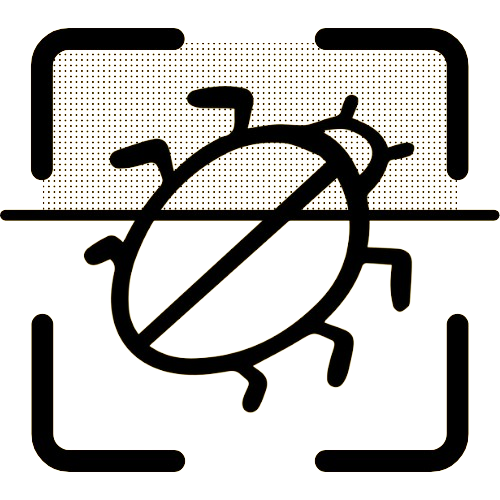The Ultimate Bed Bug Scanner: Checking for Bed Bugs Made Easy
April 17, 2025
Dealing with bed bugs is a concern that no one wants to face. These persistent pests can invade your home, causing discomfort and inconvenience. Thankfully, innovative tools like the bed bug scanner are making detection simpler and more precise than ever. In this article, we will delve into the bed bug problem, explain how a bed bug scanner works, and explore the most effective ways to use this technology for bed bug detection. Additionally, we'll discuss alternative detection methods, the right time to seek professional help, preventive measures, and the role of technology in early detection.
Understanding the Bed Bug Problem
Bed bugs are small, elusive insects that feed on human blood, usually during the night. They are a significant nuisance in both residential and commercial settings. Understanding the signs of a bed bug infestation is crucial to addressing the problem effectively. Early signs include small rust-colored stains on sheets or mattresses, tiny eggs or shells, and the bugs themselves, which can hide in cracks and crevices.
By recognizing these signs, individuals can act quickly to mitigate the issue before it escalates. Awareness is the first step, but detecting these pests can still prove challenging without the right tools.
How a Bed Bug Scanner Works
A bed bug scanner is an innovative tool designed to simplify the detection process. It leverages advanced technology such as AI and image recognition to identify potential infestations from uploaded images. The user simply uploads pictures of suspected areas, and the scanner analyzes them for telltale signs of bed bugs.
The accuracy of a bed bug scanner stems from its vast database of bed bug images, which helps differentiate between bed bugs and other common household pests. This level of precision is crucial for early detection and effective intervention.
Steps for Using a Bed Bug Scanner
Using a bed bug scanner is straightforward and user-friendly. Here’s a step-by-step guide:
-
Capture Clear Images: Take high-resolution images of areas where you suspect an infestation. Ensure that images are well-lit and focused on the commonly affected zones like mattress seams, headboards, and furniture joints.
-
Upload Images: Visit Bedbug Scanner and upload the images. Follow the directions to ensure that all relevant areas are covered.
-
Analyze Results: Allow the scanner to process the images. It will highlight potential infestation areas along with the level of likelihood.
-
Review Plans: Based on the results, plan your next steps, whether it involves self-treatment, increasing vigilance, or contacting a pest control professional.
Evaluating the Effectiveness of a Bed Bug Scanner
While technology offers impressive solutions, it's essential to evaluate the effectiveness of a bed bug scanner. Success depends on the quality of images and the comprehensiveness of the AI database. Consistent updates and user feedback often enhance scanner accuracy.
Testimonials and case studies from other users can also provide insights into how effectively a scanner detects infestations. Use this feedback to understand potential limitations and areas for further development.
Other Bed Bug Detection Methods
In addition to bed bug scanners, several other methods can help detect bed bugs:
-
Visual Inspection: Involves a thorough examination of sleeping areas, primarily focusing on seams and crevices. It requires patience and keen observation.
-
Interceptor Traps: Placed under bed legs, these traps capture climbing bed bugs, providing clear evidence of an infestation.
-
Dogs: Trained detection dogs can sniff out bed bugs with high accuracy and can be an option for those willing to spend extra for assurance.
These methods may vary in precision and cost, but they offer alternatives when technology is unavailable.
When to Call a Professional
Even with reliable detection methods, there are situations where calling a professional is essential. If infestations are large or persistent despite interventions, a pest control expert can provide comprehensive treatment. Professionals have access to stronger insecticides and methods that ensure complete eradication.
Moreover, for commercial establishments, professional intervention can help maintain compliance with industry standards and prevent legal issues.
Preventing Bed Bug Infestations
Once addressed, preventing future bed bug infestations should become a primary goal. Practical tips for prevention include:
-
Regularly Inspecting Luggage: After travel, inspect and wash all clothes on hot cycles to kill potential hitchhikers.
-
Reducing Clutter: Minimizing clutter can limit hiding places for bed bugs.
-
Sealing Cracks and Crevices: Regular maintenance can eliminate potential hiding spots.
Adopting these practices can minimize the risk of future infestations and provide peace of mind.
Technology to Aid Early Detection
Modern technology continues to advance bed bug detection capabilities. From AI-powered scanners to innovative traps, early detection strategies are giving homeowners and businesses the upper hand against these pests. Staying informed and utilizing these tools can significantly reduce the impact and spread of infestations.
In conclusion, tackling a bed bug problem requires a multifaceted approach that combines cutting-edge technology with practical know-how. By using tools like Bedbug Scanner, individuals can quickly and effectively identify bed bug infestations, enabling them to take timely action. Whether providing peace of mind or averting a significant pest problem, the benefits of early and accurate detection are undeniable. Visit Bedbug-Scanner.com today to explore our solutions and stay one step ahead of the bugs.
